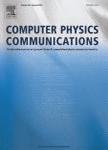版权所有:内蒙古大学图书馆 技术提供:维普资讯• 智图
内蒙古自治区呼和浩特市赛罕区大学西街235号 邮编: 010021

作者机构:Sandia Natl Labs POB 5800 Albuquerque NM 87185 USA Univ Calif Berkeley Berkeley CA 94720 USA
出 版 物:《COMPUTER PHYSICS COMMUNICATIONS》 (计算机物理学通讯)
年 卷 期:2017年第210卷
页 面:60-71页
核心收录:
学科分类:08[工学] 0812[工学-计算机科学与技术(可授工学、理学学位)] 0702[理学-物理学]
基 金:U.S. Department of Energy's National Nuclear Security Administration [DE-AC04-94AL85000] Department of Energy National Nuclear Security Administration through the Nuclear Science and Security Consortium [DE-NA0000979] U.S. Department of Homeland Security [2012-DN-130-NF0001-02] U.S. Department of Homeland Security/National Technical Nuclear Forensics Center
主 题:Nuclear forensics Principal component analysis k nearest neighbors algorithm
摘 要:A Dynamic Analysis Environment (DAE) software package is introduced to facilitate group inclusion/exclusion method testing, evaluation and comparison for pre-detonation nuclear forensics applications. Employing DAE, the multivariate signatures of a questioned material can be compared to the signatures for different, known groups, enabling the linking of the questioned material to its potential process, location, or fabrication facility. Advantages of using DAE for group inclusion/exclusion include built-in query tools for retrieving data of interest from a database, the recording and documentation of all analysis steps, a clear visualization of the analysis steps intelligible to a non-expert, and the ability to integrate analysis tools developed in different programming languages. Two group inclusion/exclusion methods are implemented in DAE: principal component analysis, a parametric feature extraction method, and k nearest neighbors, a nonparametric pattern recognition method. Spent Fuel Isotopic Composition (SFCOMPO), an open source international database of isotopic compositions for spent nuclear fuels (SNF) from 14 reactors, is used to construct PCA and KNN models for known reactor groups, and 20 simulated SNF samples are utilized in evaluating the performance of these group inclusion/exclusion models. For all 20 simulated samples, PCA in conjunction with the Q statistic correctly excludes a large percentage of reactor groups and correctly includes the true reactor of origination. Employing KNN, 14 of the 20 simulated samples are classified to their true reactor of origination. (C) 2016 Elsevier B.V. All rights reserved.